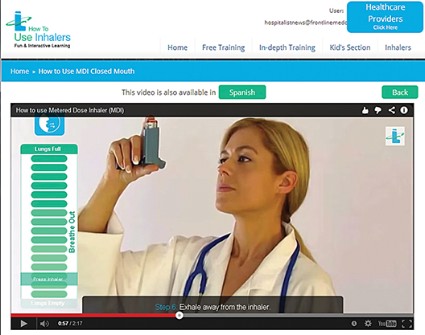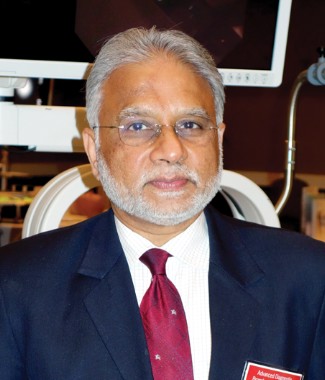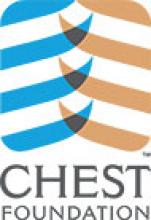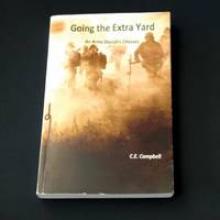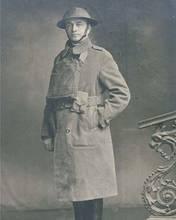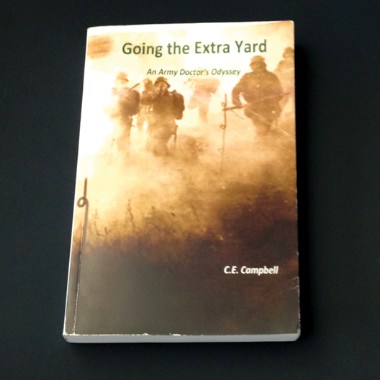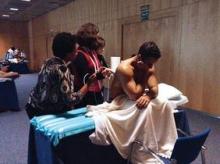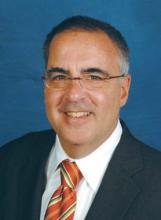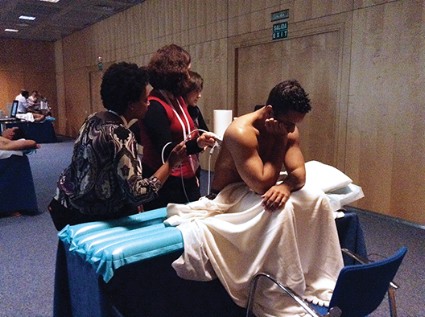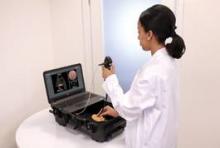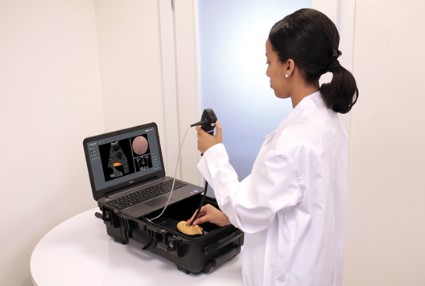User login
Add CHEST Foundation to your list
The end of the year is a time for many of us to make charitable contributions to the causes we care about most. This year, we ask you to include the CHEST Foundation on your list of organizations worthy of support.
CHEST Foundation is your foundation. Who better to understand the value of advancing chest medicine than the people who work in the field every day? Who better to know what will truly make a difference in the lives of patients, than your fellow CHEST members reviewing our outstanding grant applications each year?
Four areas of support:
• Research grants
• Community service grants
• Patient-focused public education
• Tobacco prevention, education, and cessation
Three ways to give:
• Donate online:
chestnet.org/store/donate
• Donate by phone:
800/343-2227
• Donate by mail:
CHEST Foundation
2595 Patriot Boulevard
Glenview, Illinois 60026
As a CHEST Foundation donor, you become a member of an extended family of colleagues and friends who effect change through philanthropy. Join us!
The end of the year is a time for many of us to make charitable contributions to the causes we care about most. This year, we ask you to include the CHEST Foundation on your list of organizations worthy of support.
CHEST Foundation is your foundation. Who better to understand the value of advancing chest medicine than the people who work in the field every day? Who better to know what will truly make a difference in the lives of patients, than your fellow CHEST members reviewing our outstanding grant applications each year?
Four areas of support:
• Research grants
• Community service grants
• Patient-focused public education
• Tobacco prevention, education, and cessation
Three ways to give:
• Donate online:
chestnet.org/store/donate
• Donate by phone:
800/343-2227
• Donate by mail:
CHEST Foundation
2595 Patriot Boulevard
Glenview, Illinois 60026
As a CHEST Foundation donor, you become a member of an extended family of colleagues and friends who effect change through philanthropy. Join us!
The end of the year is a time for many of us to make charitable contributions to the causes we care about most. This year, we ask you to include the CHEST Foundation on your list of organizations worthy of support.
CHEST Foundation is your foundation. Who better to understand the value of advancing chest medicine than the people who work in the field every day? Who better to know what will truly make a difference in the lives of patients, than your fellow CHEST members reviewing our outstanding grant applications each year?
Four areas of support:
• Research grants
• Community service grants
• Patient-focused public education
• Tobacco prevention, education, and cessation
Three ways to give:
• Donate online:
chestnet.org/store/donate
• Donate by phone:
800/343-2227
• Donate by mail:
CHEST Foundation
2595 Patriot Boulevard
Glenview, Illinois 60026
As a CHEST Foundation donor, you become a member of an extended family of colleagues and friends who effect change through philanthropy. Join us!
CHEST Foundation offers education material for patients
Do you know about the updated patient education materials available on the CHEST website? Resources can be accessed under the Patient Education link (chestnet.org/Foundation) of the Foundation tab. Currently, the following topics are offered:
• Asthma
• COPD
• Cough
• DVT/blood clots
• Lung cancer
• Pulmonary fibrosis
• Sarcoidosis
• Sleep apnea
Each topic gives information on symptoms, causes, risk factors, complications, tests and diagnosis, treatment, and drugs, as well as links to other informative sources. Resources include handouts, videos, prevention messaging, and other helpful activities. For example, patients can watch an instructional video on the proper way to use their inhaler by clicking on a link in the "Other Resources" section of the Asthma and COPD pages (chestnet.org/Foundation/Patient-Education-Resources/Asthma/Other-Resources).
The CHEST Foundation’s Patient Education Resources empower your patients to take care of their health. Resources are being continually expanded and updated. Check back often for new materials.
Patient Education materials are made possible through funding from The CHEST Foundation and our generous corporate supporters: Forest Pharmaceuticals, Genentech, Pfizer, Sunovian, and Janssen. Contributions to The CHEST Foundation help support this important resource.
Make a donation today at chestnet.org/Foundation or contact Patti Steele, Annual Fund Manager, at 224/521-9527.
The video associated with this article is no longer available on this site. Please view all of our videos on the MDedge YouTube channel
Do you know about the updated patient education materials available on the CHEST website? Resources can be accessed under the Patient Education link (chestnet.org/Foundation) of the Foundation tab. Currently, the following topics are offered:
• Asthma
• COPD
• Cough
• DVT/blood clots
• Lung cancer
• Pulmonary fibrosis
• Sarcoidosis
• Sleep apnea
Each topic gives information on symptoms, causes, risk factors, complications, tests and diagnosis, treatment, and drugs, as well as links to other informative sources. Resources include handouts, videos, prevention messaging, and other helpful activities. For example, patients can watch an instructional video on the proper way to use their inhaler by clicking on a link in the "Other Resources" section of the Asthma and COPD pages (chestnet.org/Foundation/Patient-Education-Resources/Asthma/Other-Resources).
The CHEST Foundation’s Patient Education Resources empower your patients to take care of their health. Resources are being continually expanded and updated. Check back often for new materials.
Patient Education materials are made possible through funding from The CHEST Foundation and our generous corporate supporters: Forest Pharmaceuticals, Genentech, Pfizer, Sunovian, and Janssen. Contributions to The CHEST Foundation help support this important resource.
Make a donation today at chestnet.org/Foundation or contact Patti Steele, Annual Fund Manager, at 224/521-9527.
The video associated with this article is no longer available on this site. Please view all of our videos on the MDedge YouTube channel
Do you know about the updated patient education materials available on the CHEST website? Resources can be accessed under the Patient Education link (chestnet.org/Foundation) of the Foundation tab. Currently, the following topics are offered:
• Asthma
• COPD
• Cough
• DVT/blood clots
• Lung cancer
• Pulmonary fibrosis
• Sarcoidosis
• Sleep apnea
Each topic gives information on symptoms, causes, risk factors, complications, tests and diagnosis, treatment, and drugs, as well as links to other informative sources. Resources include handouts, videos, prevention messaging, and other helpful activities. For example, patients can watch an instructional video on the proper way to use their inhaler by clicking on a link in the "Other Resources" section of the Asthma and COPD pages (chestnet.org/Foundation/Patient-Education-Resources/Asthma/Other-Resources).
The CHEST Foundation’s Patient Education Resources empower your patients to take care of their health. Resources are being continually expanded and updated. Check back often for new materials.
Patient Education materials are made possible through funding from The CHEST Foundation and our generous corporate supporters: Forest Pharmaceuticals, Genentech, Pfizer, Sunovian, and Janssen. Contributions to The CHEST Foundation help support this important resource.
Make a donation today at chestnet.org/Foundation or contact Patti Steele, Annual Fund Manager, at 224/521-9527.
The video associated with this article is no longer available on this site. Please view all of our videos on the MDedge YouTube channel
Clinical Trials Registry: Powering medical progress
Are you a clinical trials investigator with unused capacity?
The CHEST Clinical Trials Registry is a free service that connects physicians to information about clinical trials in respiratory disease conducted by participating pharmaceutical companies.
Ongoing groundbreaking research could have a measurable impact on patient care, but a lack of clinical trial participants is significantly slowing research and threatening the development of new treatments. Recruiting and retaining trial participants are the greatest challenges to developing the next generation of treatment options.
Participation in clinical trials provides an opportunity to advance and accelerate medical research and contribute to an improved health outlook for future generations. Use our registry to get immediate information on how you can be involved in a clinical trial.To learn more, visit: chestnet.org/Get-Involved/Clinical-Trials/Clinical-Trials-Registry.
Are you a clinical trials investigator with unused capacity?
The CHEST Clinical Trials Registry is a free service that connects physicians to information about clinical trials in respiratory disease conducted by participating pharmaceutical companies.
Ongoing groundbreaking research could have a measurable impact on patient care, but a lack of clinical trial participants is significantly slowing research and threatening the development of new treatments. Recruiting and retaining trial participants are the greatest challenges to developing the next generation of treatment options.
Participation in clinical trials provides an opportunity to advance and accelerate medical research and contribute to an improved health outlook for future generations. Use our registry to get immediate information on how you can be involved in a clinical trial.To learn more, visit: chestnet.org/Get-Involved/Clinical-Trials/Clinical-Trials-Registry.
Are you a clinical trials investigator with unused capacity?
The CHEST Clinical Trials Registry is a free service that connects physicians to information about clinical trials in respiratory disease conducted by participating pharmaceutical companies.
Ongoing groundbreaking research could have a measurable impact on patient care, but a lack of clinical trial participants is significantly slowing research and threatening the development of new treatments. Recruiting and retaining trial participants are the greatest challenges to developing the next generation of treatment options.
Participation in clinical trials provides an opportunity to advance and accelerate medical research and contribute to an improved health outlook for future generations. Use our registry to get immediate information on how you can be involved in a clinical trial.To learn more, visit: chestnet.org/Get-Involved/Clinical-Trials/Clinical-Trials-Registry.
Killian Centenary Award to Dr. Atul C. Mehta, FCCP
Dr. Atul C. Mehta, FCCP, of the Cleveland Clinic, was the recipient of 2014 Gustav Killian Centenary Award at the 18th World Congress for Bronchology and International Pulmonology and the 18th World Congress for Bronchoesophagology in Kyoto, Japan.
Gustav Killian performed the first ever bronchoscopy in 1897 to remove a foreign body from the endobronchial tree. This award was created in his honor and is considered as the highest recognition in the field. It recognizes accomplished senior bronchologists whose career achievements and clinical practices have made a significant impact on the art and the science of bronchology.
Dr, Mehta is recognized worldwide for his contributions to the field of interventional pulmonology. He is one of the founders of the American Association for Bronchology and Interventional Pulmonology and the Journal of Bronchology and Interventional Pulmonology. He has been the editor in chief for that journal for over 11 years. As a Fellow of CHEST, he has led and participated in numerous committees and educational courses and currently serves as a Regent at Large on the CHEST Board of Regents.
Congratulations, Dr. Mehta!
Dr. Atul C. Mehta, FCCP, of the Cleveland Clinic, was the recipient of 2014 Gustav Killian Centenary Award at the 18th World Congress for Bronchology and International Pulmonology and the 18th World Congress for Bronchoesophagology in Kyoto, Japan.
Gustav Killian performed the first ever bronchoscopy in 1897 to remove a foreign body from the endobronchial tree. This award was created in his honor and is considered as the highest recognition in the field. It recognizes accomplished senior bronchologists whose career achievements and clinical practices have made a significant impact on the art and the science of bronchology.
Dr, Mehta is recognized worldwide for his contributions to the field of interventional pulmonology. He is one of the founders of the American Association for Bronchology and Interventional Pulmonology and the Journal of Bronchology and Interventional Pulmonology. He has been the editor in chief for that journal for over 11 years. As a Fellow of CHEST, he has led and participated in numerous committees and educational courses and currently serves as a Regent at Large on the CHEST Board of Regents.
Congratulations, Dr. Mehta!
Dr. Atul C. Mehta, FCCP, of the Cleveland Clinic, was the recipient of 2014 Gustav Killian Centenary Award at the 18th World Congress for Bronchology and International Pulmonology and the 18th World Congress for Bronchoesophagology in Kyoto, Japan.
Gustav Killian performed the first ever bronchoscopy in 1897 to remove a foreign body from the endobronchial tree. This award was created in his honor and is considered as the highest recognition in the field. It recognizes accomplished senior bronchologists whose career achievements and clinical practices have made a significant impact on the art and the science of bronchology.
Dr, Mehta is recognized worldwide for his contributions to the field of interventional pulmonology. He is one of the founders of the American Association for Bronchology and Interventional Pulmonology and the Journal of Bronchology and Interventional Pulmonology. He has been the editor in chief for that journal for over 11 years. As a Fellow of CHEST, he has led and participated in numerous committees and educational courses and currently serves as a Regent at Large on the CHEST Board of Regents.
Congratulations, Dr. Mehta!
Grant and award opportunities for 2014 – apply now
Each year, The CHEST Foundation offers grant opportunities for clinical and translational research, leadership, and volunteer community service. In 2014, grants are offered in thrombosis, lung cancer, pulmonary arterial hypertension, COPD and alpha-1 antitrypsin deficiency, women’s lung health, pulmonary fibrosis, and community service. To learn more about these and the other awards, or to apply by the May 31, 2014, deadline, go to the Foundation’s grants and awards webpage: chestnet.org/Foundation/What-We-Do/Apply-for-a-Grant.
• The GlaxoSmithKline Distinguished Scholar in Thrombosis award is supported for $150,000 over 3 years.
• The CHEST Foundation and the Pulmonary Fibrosis Foundation Clinical Research Grant in Pulmonary Fibrosis is supported in part by InterMune, for $30,000 for 1 year.
• The CHEST Diversity Committee Young Investigator in Pulmonary, Cardiovascular, Critical Care, or Sleep Research Grant is supported in part by AstraZeneca, for $25,000 for 1 year.
• The CHEST Foundation and Respiratory Health Association Clinical Research Grant in Women’s Lung Health is supported in part by AstraZeneca, for $10,000 for 1 year.
• The Clinical Research Grant in Pulmonary Arterial Hypertension is supported by Actelion, for $50,000 for 1 year.
• The CHEST Foundation and the Alpha-1 Foundation Clinical Research Grant in COPD and Alpha-1 Antitrypsin (AAT) Deficiency is supported for $25,000 for 1 year.
• The Clinical Research Grant in Lung Cancer is supported by Genentech, for $100,000 over 2 years.
• The Community Service Grants Honoring D. Robert McCaffree, MD, Master FCCP, Award range from $5,000 to $15,000 for 1 year.
Each year, The CHEST Foundation offers grant opportunities for clinical and translational research, leadership, and volunteer community service. In 2014, grants are offered in thrombosis, lung cancer, pulmonary arterial hypertension, COPD and alpha-1 antitrypsin deficiency, women’s lung health, pulmonary fibrosis, and community service. To learn more about these and the other awards, or to apply by the May 31, 2014, deadline, go to the Foundation’s grants and awards webpage: chestnet.org/Foundation/What-We-Do/Apply-for-a-Grant.
• The GlaxoSmithKline Distinguished Scholar in Thrombosis award is supported for $150,000 over 3 years.
• The CHEST Foundation and the Pulmonary Fibrosis Foundation Clinical Research Grant in Pulmonary Fibrosis is supported in part by InterMune, for $30,000 for 1 year.
• The CHEST Diversity Committee Young Investigator in Pulmonary, Cardiovascular, Critical Care, or Sleep Research Grant is supported in part by AstraZeneca, for $25,000 for 1 year.
• The CHEST Foundation and Respiratory Health Association Clinical Research Grant in Women’s Lung Health is supported in part by AstraZeneca, for $10,000 for 1 year.
• The Clinical Research Grant in Pulmonary Arterial Hypertension is supported by Actelion, for $50,000 for 1 year.
• The CHEST Foundation and the Alpha-1 Foundation Clinical Research Grant in COPD and Alpha-1 Antitrypsin (AAT) Deficiency is supported for $25,000 for 1 year.
• The Clinical Research Grant in Lung Cancer is supported by Genentech, for $100,000 over 2 years.
• The Community Service Grants Honoring D. Robert McCaffree, MD, Master FCCP, Award range from $5,000 to $15,000 for 1 year.
Each year, The CHEST Foundation offers grant opportunities for clinical and translational research, leadership, and volunteer community service. In 2014, grants are offered in thrombosis, lung cancer, pulmonary arterial hypertension, COPD and alpha-1 antitrypsin deficiency, women’s lung health, pulmonary fibrosis, and community service. To learn more about these and the other awards, or to apply by the May 31, 2014, deadline, go to the Foundation’s grants and awards webpage: chestnet.org/Foundation/What-We-Do/Apply-for-a-Grant.
• The GlaxoSmithKline Distinguished Scholar in Thrombosis award is supported for $150,000 over 3 years.
• The CHEST Foundation and the Pulmonary Fibrosis Foundation Clinical Research Grant in Pulmonary Fibrosis is supported in part by InterMune, for $30,000 for 1 year.
• The CHEST Diversity Committee Young Investigator in Pulmonary, Cardiovascular, Critical Care, or Sleep Research Grant is supported in part by AstraZeneca, for $25,000 for 1 year.
• The CHEST Foundation and Respiratory Health Association Clinical Research Grant in Women’s Lung Health is supported in part by AstraZeneca, for $10,000 for 1 year.
• The Clinical Research Grant in Pulmonary Arterial Hypertension is supported by Actelion, for $50,000 for 1 year.
• The CHEST Foundation and the Alpha-1 Foundation Clinical Research Grant in COPD and Alpha-1 Antitrypsin (AAT) Deficiency is supported for $25,000 for 1 year.
• The Clinical Research Grant in Lung Cancer is supported by Genentech, for $100,000 over 2 years.
• The Community Service Grants Honoring D. Robert McCaffree, MD, Master FCCP, Award range from $5,000 to $15,000 for 1 year.
Book Review: A pulmonary medicine pioneer’s life well lived – and passionately rendered – in biography
It seems there was indeed a time when a man of 132 pounds could be a collegiate football player, a center in fact. It was a time when family names became anglicized. It was a time when bacterial infections could take a young healthy person’s life in days or hours of his or her apparent perfect health. It was a time when getting into medical school was much easier than making a living in medicine!
This author, C.E. Campbell, is the grandson of his biographical subject. His grandfather is the unmistakable protagonist, hero, but through this perspective, a reader is treated to the origins of collegiate and professional American football, a tender brotherly love story, a glimpse of pre-Flexnerian medical education, and the origins of pulmonary medicine through the extant realities of tubercular disease.
The business of pulmonary medicine prior to effective antibiotics can be experienced vicariously through Dr. Charlie Hendricks’ early career.
Ah! But there is much, much more. Dr. Hendricks goes to the "war to end all wars," and his service in northeast France is meticulously detailed, as we are apparently the beneficiaries of a well-kept diary or ledger. If you are a WWII aficionado, you will enjoy comparing his up-close experiences with the subsequent guerre mondial.
If you have wondered about the use of chemical weapons, relevant even today, Dr. Hendricks’ experiences are, if not riveting, commanding of attention.
The end of the first global war seems to be a bit of a climax, but even in the dénouement, Dr. Hendricks’ career holds interest as he is involved with the origin of our own professional organization, the American College of Chest Physicians, and its journal. The evolution of medicine from self-pay to a world of third-party payers lies obscured beneath the career as reported, but interested readers will be aware and interested to view this experience.
In the end, one almost sees Dr. Charlie Hendricks as having a Forrest Gump-like career. He seems to have been at the fore of such a number of exciting developments over the eras through which he lived. It is a treat for us, the readers, to experience that as well.
Reading this work forced me to reflect on what makes a great biography. Is it the story, the life, or its subject and the events therein contained? Or is it the writer, the descriptions, and the presentation that carry such a work? While well written and detailed (especially the WWI account), the distinguished author may not be a Chernow or Caro. Yet what might be lacking in objectivity and style is more, I would say much more, compensated for in passion and scrupulousness. C. E. Campbell ardently, perhaps lovingly, details his subject’s life, but Dr. Charlie Hendricks lived a passionate life, and how could his biography be otherwise written?
It seems there was indeed a time when a man of 132 pounds could be a collegiate football player, a center in fact. It was a time when family names became anglicized. It was a time when bacterial infections could take a young healthy person’s life in days or hours of his or her apparent perfect health. It was a time when getting into medical school was much easier than making a living in medicine!
This author, C.E. Campbell, is the grandson of his biographical subject. His grandfather is the unmistakable protagonist, hero, but through this perspective, a reader is treated to the origins of collegiate and professional American football, a tender brotherly love story, a glimpse of pre-Flexnerian medical education, and the origins of pulmonary medicine through the extant realities of tubercular disease.
The business of pulmonary medicine prior to effective antibiotics can be experienced vicariously through Dr. Charlie Hendricks’ early career.
Ah! But there is much, much more. Dr. Hendricks goes to the "war to end all wars," and his service in northeast France is meticulously detailed, as we are apparently the beneficiaries of a well-kept diary or ledger. If you are a WWII aficionado, you will enjoy comparing his up-close experiences with the subsequent guerre mondial.
If you have wondered about the use of chemical weapons, relevant even today, Dr. Hendricks’ experiences are, if not riveting, commanding of attention.
The end of the first global war seems to be a bit of a climax, but even in the dénouement, Dr. Hendricks’ career holds interest as he is involved with the origin of our own professional organization, the American College of Chest Physicians, and its journal. The evolution of medicine from self-pay to a world of third-party payers lies obscured beneath the career as reported, but interested readers will be aware and interested to view this experience.
In the end, one almost sees Dr. Charlie Hendricks as having a Forrest Gump-like career. He seems to have been at the fore of such a number of exciting developments over the eras through which he lived. It is a treat for us, the readers, to experience that as well.
Reading this work forced me to reflect on what makes a great biography. Is it the story, the life, or its subject and the events therein contained? Or is it the writer, the descriptions, and the presentation that carry such a work? While well written and detailed (especially the WWI account), the distinguished author may not be a Chernow or Caro. Yet what might be lacking in objectivity and style is more, I would say much more, compensated for in passion and scrupulousness. C. E. Campbell ardently, perhaps lovingly, details his subject’s life, but Dr. Charlie Hendricks lived a passionate life, and how could his biography be otherwise written?
It seems there was indeed a time when a man of 132 pounds could be a collegiate football player, a center in fact. It was a time when family names became anglicized. It was a time when bacterial infections could take a young healthy person’s life in days or hours of his or her apparent perfect health. It was a time when getting into medical school was much easier than making a living in medicine!
This author, C.E. Campbell, is the grandson of his biographical subject. His grandfather is the unmistakable protagonist, hero, but through this perspective, a reader is treated to the origins of collegiate and professional American football, a tender brotherly love story, a glimpse of pre-Flexnerian medical education, and the origins of pulmonary medicine through the extant realities of tubercular disease.
The business of pulmonary medicine prior to effective antibiotics can be experienced vicariously through Dr. Charlie Hendricks’ early career.
Ah! But there is much, much more. Dr. Hendricks goes to the "war to end all wars," and his service in northeast France is meticulously detailed, as we are apparently the beneficiaries of a well-kept diary or ledger. If you are a WWII aficionado, you will enjoy comparing his up-close experiences with the subsequent guerre mondial.
If you have wondered about the use of chemical weapons, relevant even today, Dr. Hendricks’ experiences are, if not riveting, commanding of attention.
The end of the first global war seems to be a bit of a climax, but even in the dénouement, Dr. Hendricks’ career holds interest as he is involved with the origin of our own professional organization, the American College of Chest Physicians, and its journal. The evolution of medicine from self-pay to a world of third-party payers lies obscured beneath the career as reported, but interested readers will be aware and interested to view this experience.
In the end, one almost sees Dr. Charlie Hendricks as having a Forrest Gump-like career. He seems to have been at the fore of such a number of exciting developments over the eras through which he lived. It is a treat for us, the readers, to experience that as well.
Reading this work forced me to reflect on what makes a great biography. Is it the story, the life, or its subject and the events therein contained? Or is it the writer, the descriptions, and the presentation that carry such a work? While well written and detailed (especially the WWI account), the distinguished author may not be a Chernow or Caro. Yet what might be lacking in objectivity and style is more, I would say much more, compensated for in passion and scrupulousness. C. E. Campbell ardently, perhaps lovingly, details his subject’s life, but Dr. Charlie Hendricks lived a passionate life, and how could his biography be otherwise written?
CHEST World Congress 2014 an unqualified success
The idea to conduct CHEST World Congress 2014 came from among our 3,500 members who live outside the United States and Canada. The high cost of international travel precludes many members from attending the annual North American CHEST meeting, and the prospect of expanding our educational programs to a wider international audience is one of our responsibilities as a global education organization. In fact, CHEST has a decades-old history of conducting international congresses, from the first in Rome in 1950, to the last in Bali in 1996.
CHEST’s leadership and staff agreed that another international CHEST meeting was called for. After 2 years of planning, CHEST World Congress 2014 was held March 21- – 24, 2014, in Madrid, Spain. Organized in collaboration with the Spanish Society of Pneumology and Thoracic Surgery (SEPAR), a program was developed to offer clinical education by international faculty to delegates from around the world, using the array of proven and innovative approaches well-known to attendees at the annual CHEST meeting.
The program committee was assembled from global leaders in clinical chest medicine. The committee and congress were co-chaired by Dr. Richard S. Irwin, Master FCCP, and Editor-in-Chief of CHEST; and Dr. Joan B. Soriano, Director of the International Affairs Committee of SEPAR. The close cooperation of CHEST and SEPAR committee members enabled the production of the CHEST World Congress that spanned 3.5 days, Five postgraduate courses were offered on day 1 and included programs on thoracic ultrasonography, sleep medicine, thoracic imaging, the multidisciplinary approach to non-small cell lung cancer, and a review of controversies in pulmonary medicine. The next 2.5 days consisted of 142 sessions of all types and up to 21 available hours of continuing medical education, accredited by both the American and European accrediting bodies.
The congress either fulfilled or exceeded all expectations. More than 2,200 people from 78 countries attended. The largest contingent came from Italy, with 356 delegates, followed by the United States with 292, Spain with 236, and France with 124.
The scientific program mirrored the range of educational activities that is part of the annual CHEST meeting. Faculty from 30 countries conducted the 69 general sessions that covered the spectrum of chest medicine. The call for original research and case presentations received enthusiastic responses, with 469 abstracts and 223 case reports presented in slide and poster formats.
The annual CHEST meeting provides a rich variety of educational experiences directed at individuals and small groups, and CHEST World Congress provided the same environment. Problem-based learning exercises and small case-based discussions have limited participation designed to promote highly interactive learning. Simulation activities are a hallmark of CHEST’s educational portfolio, and CHEST World Congress offered hands-on sessions in ultrasonography, bronchoscopy, pulmonary function testing, and sleep medicine.
Two outstanding keynote speakers enriched the overall experience with their unique perspectives. Dr. Valentin Fuster, arguably the most prolific and honored cardiologist alive, spoke on "The Two Pathways of Translational Research," and on the fundamental influence of mentoring both personal growth of mentees and the growth of science. Dr. Stephen Bergman, pen name Samuel Shem and author of a classic in medical fiction, House of God, gave an inspiring discussion about "Staying Human in Medicine."
Madrid as a venue was a contributing factor to the success of the Congress. Its rich history, cultural institutions, and opportunities for great meals and entertainment surely attracted many delegates.. The atmosphere in Madrid was electrified on Sunday night with "El Clásico," the annual matchup of the Barcelona and Real Madrid teams,. Some say that this is the biggest event, bigger than the World Cup, and bigger than the NFL Superbowl in the world football calendar. A few delegates got tickets, but most were fixed to televisions in hundreds of bars and restaurants around the city. Barcelona won, and the mood of Madrid cooled considerably.
CHEST World Congress 2014 owes its success to our partners in SEPAR, the international faculty who traveled long distances at their own expense, the industry partners who supported us, and the incredible dedication and hard work of the CHEST staff . We look forward to the next CHEST World Congress—please stand by for details of the dates and venue, coming soon.
The idea to conduct CHEST World Congress 2014 came from among our 3,500 members who live outside the United States and Canada. The high cost of international travel precludes many members from attending the annual North American CHEST meeting, and the prospect of expanding our educational programs to a wider international audience is one of our responsibilities as a global education organization. In fact, CHEST has a decades-old history of conducting international congresses, from the first in Rome in 1950, to the last in Bali in 1996.
CHEST’s leadership and staff agreed that another international CHEST meeting was called for. After 2 years of planning, CHEST World Congress 2014 was held March 21- – 24, 2014, in Madrid, Spain. Organized in collaboration with the Spanish Society of Pneumology and Thoracic Surgery (SEPAR), a program was developed to offer clinical education by international faculty to delegates from around the world, using the array of proven and innovative approaches well-known to attendees at the annual CHEST meeting.
The program committee was assembled from global leaders in clinical chest medicine. The committee and congress were co-chaired by Dr. Richard S. Irwin, Master FCCP, and Editor-in-Chief of CHEST; and Dr. Joan B. Soriano, Director of the International Affairs Committee of SEPAR. The close cooperation of CHEST and SEPAR committee members enabled the production of the CHEST World Congress that spanned 3.5 days, Five postgraduate courses were offered on day 1 and included programs on thoracic ultrasonography, sleep medicine, thoracic imaging, the multidisciplinary approach to non-small cell lung cancer, and a review of controversies in pulmonary medicine. The next 2.5 days consisted of 142 sessions of all types and up to 21 available hours of continuing medical education, accredited by both the American and European accrediting bodies.
The congress either fulfilled or exceeded all expectations. More than 2,200 people from 78 countries attended. The largest contingent came from Italy, with 356 delegates, followed by the United States with 292, Spain with 236, and France with 124.
The scientific program mirrored the range of educational activities that is part of the annual CHEST meeting. Faculty from 30 countries conducted the 69 general sessions that covered the spectrum of chest medicine. The call for original research and case presentations received enthusiastic responses, with 469 abstracts and 223 case reports presented in slide and poster formats.
The annual CHEST meeting provides a rich variety of educational experiences directed at individuals and small groups, and CHEST World Congress provided the same environment. Problem-based learning exercises and small case-based discussions have limited participation designed to promote highly interactive learning. Simulation activities are a hallmark of CHEST’s educational portfolio, and CHEST World Congress offered hands-on sessions in ultrasonography, bronchoscopy, pulmonary function testing, and sleep medicine.
Two outstanding keynote speakers enriched the overall experience with their unique perspectives. Dr. Valentin Fuster, arguably the most prolific and honored cardiologist alive, spoke on "The Two Pathways of Translational Research," and on the fundamental influence of mentoring both personal growth of mentees and the growth of science. Dr. Stephen Bergman, pen name Samuel Shem and author of a classic in medical fiction, House of God, gave an inspiring discussion about "Staying Human in Medicine."
Madrid as a venue was a contributing factor to the success of the Congress. Its rich history, cultural institutions, and opportunities for great meals and entertainment surely attracted many delegates.. The atmosphere in Madrid was electrified on Sunday night with "El Clásico," the annual matchup of the Barcelona and Real Madrid teams,. Some say that this is the biggest event, bigger than the World Cup, and bigger than the NFL Superbowl in the world football calendar. A few delegates got tickets, but most were fixed to televisions in hundreds of bars and restaurants around the city. Barcelona won, and the mood of Madrid cooled considerably.
CHEST World Congress 2014 owes its success to our partners in SEPAR, the international faculty who traveled long distances at their own expense, the industry partners who supported us, and the incredible dedication and hard work of the CHEST staff . We look forward to the next CHEST World Congress—please stand by for details of the dates and venue, coming soon.
The idea to conduct CHEST World Congress 2014 came from among our 3,500 members who live outside the United States and Canada. The high cost of international travel precludes many members from attending the annual North American CHEST meeting, and the prospect of expanding our educational programs to a wider international audience is one of our responsibilities as a global education organization. In fact, CHEST has a decades-old history of conducting international congresses, from the first in Rome in 1950, to the last in Bali in 1996.
CHEST’s leadership and staff agreed that another international CHEST meeting was called for. After 2 years of planning, CHEST World Congress 2014 was held March 21- – 24, 2014, in Madrid, Spain. Organized in collaboration with the Spanish Society of Pneumology and Thoracic Surgery (SEPAR), a program was developed to offer clinical education by international faculty to delegates from around the world, using the array of proven and innovative approaches well-known to attendees at the annual CHEST meeting.
The program committee was assembled from global leaders in clinical chest medicine. The committee and congress were co-chaired by Dr. Richard S. Irwin, Master FCCP, and Editor-in-Chief of CHEST; and Dr. Joan B. Soriano, Director of the International Affairs Committee of SEPAR. The close cooperation of CHEST and SEPAR committee members enabled the production of the CHEST World Congress that spanned 3.5 days, Five postgraduate courses were offered on day 1 and included programs on thoracic ultrasonography, sleep medicine, thoracic imaging, the multidisciplinary approach to non-small cell lung cancer, and a review of controversies in pulmonary medicine. The next 2.5 days consisted of 142 sessions of all types and up to 21 available hours of continuing medical education, accredited by both the American and European accrediting bodies.
The congress either fulfilled or exceeded all expectations. More than 2,200 people from 78 countries attended. The largest contingent came from Italy, with 356 delegates, followed by the United States with 292, Spain with 236, and France with 124.
The scientific program mirrored the range of educational activities that is part of the annual CHEST meeting. Faculty from 30 countries conducted the 69 general sessions that covered the spectrum of chest medicine. The call for original research and case presentations received enthusiastic responses, with 469 abstracts and 223 case reports presented in slide and poster formats.
The annual CHEST meeting provides a rich variety of educational experiences directed at individuals and small groups, and CHEST World Congress provided the same environment. Problem-based learning exercises and small case-based discussions have limited participation designed to promote highly interactive learning. Simulation activities are a hallmark of CHEST’s educational portfolio, and CHEST World Congress offered hands-on sessions in ultrasonography, bronchoscopy, pulmonary function testing, and sleep medicine.
Two outstanding keynote speakers enriched the overall experience with their unique perspectives. Dr. Valentin Fuster, arguably the most prolific and honored cardiologist alive, spoke on "The Two Pathways of Translational Research," and on the fundamental influence of mentoring both personal growth of mentees and the growth of science. Dr. Stephen Bergman, pen name Samuel Shem and author of a classic in medical fiction, House of God, gave an inspiring discussion about "Staying Human in Medicine."
Madrid as a venue was a contributing factor to the success of the Congress. Its rich history, cultural institutions, and opportunities for great meals and entertainment surely attracted many delegates.. The atmosphere in Madrid was electrified on Sunday night with "El Clásico," the annual matchup of the Barcelona and Real Madrid teams,. Some say that this is the biggest event, bigger than the World Cup, and bigger than the NFL Superbowl in the world football calendar. A few delegates got tickets, but most were fixed to televisions in hundreds of bars and restaurants around the city. Barcelona won, and the mood of Madrid cooled considerably.
CHEST World Congress 2014 owes its success to our partners in SEPAR, the international faculty who traveled long distances at their own expense, the industry partners who supported us, and the incredible dedication and hard work of the CHEST staff . We look forward to the next CHEST World Congress—please stand by for details of the dates and venue, coming soon.
CHEST 2014: Top training, hot music meet in Austin
When visiting Austin, what is a "can’t miss"? We asked our favorite, Austin-resident CHEST members – and they overwhelmingly replied that you must hear some live music. In fact, Austin has been deemed the Live Music Capital of the World and is famous for it’s annual music festival, South by Southwest. So keep an evening free or add on some extra time before or after CHEST 2014, and make sure to take in a concert at one of Austin’s many music venues.
One of Austin’s most famous concert venues is Austin City Limits (ACL). This theater has a 2,750-person capacity and hosts about 100 concerts a year. The theater has three levels with levels 2 and 3 featuring legendary music photography by Scott Newton and Jim Marshall. There is not a bad seat in the house; every seat is within 75 feet of the stage.
ACL is also the home for the taping of a PBS series, Austin City Limits, which is the longest running music series in American TV history. The pilot episode featured Willie Nelson in 1974. Since then, 2nd street – the road where the theater is located – was renamed Willie Nelson Blvd, and a statue of Willie Nelson stands outside the venue.
There are many other places to listen to live music in Austin. Here are a few more to check out:
• Antone’s Night Club – This club is known as home of the blues in Austin. It opened in 1975 and has hosted great artists including B.B. King, Buddy Guy, Eric Clapton, and Stevie Ray Vaughn.
• The Broken Spoke – This dance hall is an authentic honky-tonk. Willie Nelson, George Straight, and Dolly Parton have performed here. This venue also includes a "memorabilia room" that is filled with photos, hats, and other country-music treasures.
• Stubb’s BBQ – This famous BBQ joint hosts regional and national fan-favorites like Weezer, Los Lonely Boys, and Adele. Plus, it’s known for its gospel brunch on Sundays, which includes a soulful performance, Southern-style buffet, and a make-your-own-Bloody-Mary bar.
• Threadgill’s – This restaurant serves classic southern dishes and is adorned with memorabilia from it’s historic past. A piano that hangs from the ceiling was played by artists as diverse as Jerry Lee Lewis to Captain Beefheart.
Austin’s music scene is sure to get your toes tapping, and CHEST 2014 will move you with the latest clinical information in chest medicine. Join us October 25 - 30 for CHEST 2014, and you won’t miss a beat with cutting-edge sessions and simulation training designed to update you on the latest patient-care strategies. You will be part of an international community of innovative problem-solvers. Learn more and register today at chestmeeting.chestnet.org.
When visiting Austin, what is a "can’t miss"? We asked our favorite, Austin-resident CHEST members – and they overwhelmingly replied that you must hear some live music. In fact, Austin has been deemed the Live Music Capital of the World and is famous for it’s annual music festival, South by Southwest. So keep an evening free or add on some extra time before or after CHEST 2014, and make sure to take in a concert at one of Austin’s many music venues.
One of Austin’s most famous concert venues is Austin City Limits (ACL). This theater has a 2,750-person capacity and hosts about 100 concerts a year. The theater has three levels with levels 2 and 3 featuring legendary music photography by Scott Newton and Jim Marshall. There is not a bad seat in the house; every seat is within 75 feet of the stage.
ACL is also the home for the taping of a PBS series, Austin City Limits, which is the longest running music series in American TV history. The pilot episode featured Willie Nelson in 1974. Since then, 2nd street – the road where the theater is located – was renamed Willie Nelson Blvd, and a statue of Willie Nelson stands outside the venue.
There are many other places to listen to live music in Austin. Here are a few more to check out:
• Antone’s Night Club – This club is known as home of the blues in Austin. It opened in 1975 and has hosted great artists including B.B. King, Buddy Guy, Eric Clapton, and Stevie Ray Vaughn.
• The Broken Spoke – This dance hall is an authentic honky-tonk. Willie Nelson, George Straight, and Dolly Parton have performed here. This venue also includes a "memorabilia room" that is filled with photos, hats, and other country-music treasures.
• Stubb’s BBQ – This famous BBQ joint hosts regional and national fan-favorites like Weezer, Los Lonely Boys, and Adele. Plus, it’s known for its gospel brunch on Sundays, which includes a soulful performance, Southern-style buffet, and a make-your-own-Bloody-Mary bar.
• Threadgill’s – This restaurant serves classic southern dishes and is adorned with memorabilia from it’s historic past. A piano that hangs from the ceiling was played by artists as diverse as Jerry Lee Lewis to Captain Beefheart.
Austin’s music scene is sure to get your toes tapping, and CHEST 2014 will move you with the latest clinical information in chest medicine. Join us October 25 - 30 for CHEST 2014, and you won’t miss a beat with cutting-edge sessions and simulation training designed to update you on the latest patient-care strategies. You will be part of an international community of innovative problem-solvers. Learn more and register today at chestmeeting.chestnet.org.
When visiting Austin, what is a "can’t miss"? We asked our favorite, Austin-resident CHEST members – and they overwhelmingly replied that you must hear some live music. In fact, Austin has been deemed the Live Music Capital of the World and is famous for it’s annual music festival, South by Southwest. So keep an evening free or add on some extra time before or after CHEST 2014, and make sure to take in a concert at one of Austin’s many music venues.
One of Austin’s most famous concert venues is Austin City Limits (ACL). This theater has a 2,750-person capacity and hosts about 100 concerts a year. The theater has three levels with levels 2 and 3 featuring legendary music photography by Scott Newton and Jim Marshall. There is not a bad seat in the house; every seat is within 75 feet of the stage.
ACL is also the home for the taping of a PBS series, Austin City Limits, which is the longest running music series in American TV history. The pilot episode featured Willie Nelson in 1974. Since then, 2nd street – the road where the theater is located – was renamed Willie Nelson Blvd, and a statue of Willie Nelson stands outside the venue.
There are many other places to listen to live music in Austin. Here are a few more to check out:
• Antone’s Night Club – This club is known as home of the blues in Austin. It opened in 1975 and has hosted great artists including B.B. King, Buddy Guy, Eric Clapton, and Stevie Ray Vaughn.
• The Broken Spoke – This dance hall is an authentic honky-tonk. Willie Nelson, George Straight, and Dolly Parton have performed here. This venue also includes a "memorabilia room" that is filled with photos, hats, and other country-music treasures.
• Stubb’s BBQ – This famous BBQ joint hosts regional and national fan-favorites like Weezer, Los Lonely Boys, and Adele. Plus, it’s known for its gospel brunch on Sundays, which includes a soulful performance, Southern-style buffet, and a make-your-own-Bloody-Mary bar.
• Threadgill’s – This restaurant serves classic southern dishes and is adorned with memorabilia from it’s historic past. A piano that hangs from the ceiling was played by artists as diverse as Jerry Lee Lewis to Captain Beefheart.
Austin’s music scene is sure to get your toes tapping, and CHEST 2014 will move you with the latest clinical information in chest medicine. Join us October 25 - 30 for CHEST 2014, and you won’t miss a beat with cutting-edge sessions and simulation training designed to update you on the latest patient-care strategies. You will be part of an international community of innovative problem-solvers. Learn more and register today at chestmeeting.chestnet.org.
A new look for CHEST
In late March, the CHEST Publications website debuted its new look reflecting the new brand launched by the American College of Chest Physicians at CHEST 2013. You can view the new website at: publications.chestnet.org. The CHEST website can be seen at journal.publications.chestnet.org and CHEST books at books.publications.chestnet.org.
With the July 2014 issue, this new look will be incorporated into the print journal from the cover to the interior pages. We are very excited about the change that raises CHEST to a new level in visual quality.
In late March, the CHEST Publications website debuted its new look reflecting the new brand launched by the American College of Chest Physicians at CHEST 2013. You can view the new website at: publications.chestnet.org. The CHEST website can be seen at journal.publications.chestnet.org and CHEST books at books.publications.chestnet.org.
With the July 2014 issue, this new look will be incorporated into the print journal from the cover to the interior pages. We are very excited about the change that raises CHEST to a new level in visual quality.
In late March, the CHEST Publications website debuted its new look reflecting the new brand launched by the American College of Chest Physicians at CHEST 2013. You can view the new website at: publications.chestnet.org. The CHEST website can be seen at journal.publications.chestnet.org and CHEST books at books.publications.chestnet.org.
With the July 2014 issue, this new look will be incorporated into the print journal from the cover to the interior pages. We are very excited about the change that raises CHEST to a new level in visual quality.
BRONCH Express(tm) arrives for EBUS-TBNA simulation training
The American College of Chest Physicians (CHEST) is excited to lead the way in delivering medical simulation education by introducing BRONCH Express. This new device promotes bronchoscopy education by providing portable and cost-effective simulation for EBUS-TBNA training. BRONCH Express was developed as a collaborative venture between CHEST and Simbionix, a world leader in medical simulation.
BRONCH Express was unveiled at the 2014 CHEST World Congress in Madrid, and it will be available to participants at various CHEST bronchoscopy and interventional pulmonology courses.
Mounted inside a carry-on case, this desktop simulator is easy to set up and repack. Virtual patient cases offer a realistic anatomical environment based on actual patient data. The BRONCH Express provides a meaningful yet affordable hands-on training solution for medical students, new pulmonary and critical-care fellows, and attending physicians to train on EBUS-TBNA.
CHEST Senior Vice President, Business Development, Megan Schagrin, CAE, CFRE, said that it is exciting to expand the role of simulation education by offering portable and cost-effective medical simulation training.
"We look forward to seeing how BRONCH Express transforms medical simulation training. This suitcase-sized product, which is available for a considerably lower cost than other simulation equipment, can now be used by medical schools, hospital systems, and even large group practices. CHEST will receive a royalty on each sale."
CHEST President Dr. Michael H. Baumann, FCCP, added that there is great value in partnering with Simbionix to develop innovative training tools like BRONCH Express.
"Our commitment to helping chest medicine professionals to develop new skills and knowledge to improve patient care around the globe make partnerships such as this a logical step for our organization," Dr. Baumann said. "The partnership with Simbionix allows expansion of important clinical training in an affordable and accessible manner."
Many of CHEST’s upcoming live-learning courses will feature BRONCH Express; these courses will be held at our new Innovation, Simulation, and Training Center located in Glenview, Illinois:
- Essentials of Bronchoscopy June 5-6 and Sept 24-25
- Endobronchial Ultrasound June 7-8 and Sept 26-27
- Comprehensive Pleural Procedures June 20-21
- Peripheral Bronchoscopy June 22
- Therapeutic Bronchoscopy in Asthma and Persistent Air Leaks June 23
Learn more about CHEST’s live-learning courses by going to chestnet.org/live-learning. Bronch Express is also available for purchase exclusively through Simbionix global sales network. Learn more at simbionix.com.
The American College of Chest Physicians (CHEST) is excited to lead the way in delivering medical simulation education by introducing BRONCH Express. This new device promotes bronchoscopy education by providing portable and cost-effective simulation for EBUS-TBNA training. BRONCH Express was developed as a collaborative venture between CHEST and Simbionix, a world leader in medical simulation.
BRONCH Express was unveiled at the 2014 CHEST World Congress in Madrid, and it will be available to participants at various CHEST bronchoscopy and interventional pulmonology courses.
Mounted inside a carry-on case, this desktop simulator is easy to set up and repack. Virtual patient cases offer a realistic anatomical environment based on actual patient data. The BRONCH Express provides a meaningful yet affordable hands-on training solution for medical students, new pulmonary and critical-care fellows, and attending physicians to train on EBUS-TBNA.
CHEST Senior Vice President, Business Development, Megan Schagrin, CAE, CFRE, said that it is exciting to expand the role of simulation education by offering portable and cost-effective medical simulation training.
"We look forward to seeing how BRONCH Express transforms medical simulation training. This suitcase-sized product, which is available for a considerably lower cost than other simulation equipment, can now be used by medical schools, hospital systems, and even large group practices. CHEST will receive a royalty on each sale."
CHEST President Dr. Michael H. Baumann, FCCP, added that there is great value in partnering with Simbionix to develop innovative training tools like BRONCH Express.
"Our commitment to helping chest medicine professionals to develop new skills and knowledge to improve patient care around the globe make partnerships such as this a logical step for our organization," Dr. Baumann said. "The partnership with Simbionix allows expansion of important clinical training in an affordable and accessible manner."
Many of CHEST’s upcoming live-learning courses will feature BRONCH Express; these courses will be held at our new Innovation, Simulation, and Training Center located in Glenview, Illinois:
- Essentials of Bronchoscopy June 5-6 and Sept 24-25
- Endobronchial Ultrasound June 7-8 and Sept 26-27
- Comprehensive Pleural Procedures June 20-21
- Peripheral Bronchoscopy June 22
- Therapeutic Bronchoscopy in Asthma and Persistent Air Leaks June 23
Learn more about CHEST’s live-learning courses by going to chestnet.org/live-learning. Bronch Express is also available for purchase exclusively through Simbionix global sales network. Learn more at simbionix.com.
The American College of Chest Physicians (CHEST) is excited to lead the way in delivering medical simulation education by introducing BRONCH Express. This new device promotes bronchoscopy education by providing portable and cost-effective simulation for EBUS-TBNA training. BRONCH Express was developed as a collaborative venture between CHEST and Simbionix, a world leader in medical simulation.
BRONCH Express was unveiled at the 2014 CHEST World Congress in Madrid, and it will be available to participants at various CHEST bronchoscopy and interventional pulmonology courses.
Mounted inside a carry-on case, this desktop simulator is easy to set up and repack. Virtual patient cases offer a realistic anatomical environment based on actual patient data. The BRONCH Express provides a meaningful yet affordable hands-on training solution for medical students, new pulmonary and critical-care fellows, and attending physicians to train on EBUS-TBNA.
CHEST Senior Vice President, Business Development, Megan Schagrin, CAE, CFRE, said that it is exciting to expand the role of simulation education by offering portable and cost-effective medical simulation training.
"We look forward to seeing how BRONCH Express transforms medical simulation training. This suitcase-sized product, which is available for a considerably lower cost than other simulation equipment, can now be used by medical schools, hospital systems, and even large group practices. CHEST will receive a royalty on each sale."
CHEST President Dr. Michael H. Baumann, FCCP, added that there is great value in partnering with Simbionix to develop innovative training tools like BRONCH Express.
"Our commitment to helping chest medicine professionals to develop new skills and knowledge to improve patient care around the globe make partnerships such as this a logical step for our organization," Dr. Baumann said. "The partnership with Simbionix allows expansion of important clinical training in an affordable and accessible manner."
Many of CHEST’s upcoming live-learning courses will feature BRONCH Express; these courses will be held at our new Innovation, Simulation, and Training Center located in Glenview, Illinois:
- Essentials of Bronchoscopy June 5-6 and Sept 24-25
- Endobronchial Ultrasound June 7-8 and Sept 26-27
- Comprehensive Pleural Procedures June 20-21
- Peripheral Bronchoscopy June 22
- Therapeutic Bronchoscopy in Asthma and Persistent Air Leaks June 23
Learn more about CHEST’s live-learning courses by going to chestnet.org/live-learning. Bronch Express is also available for purchase exclusively through Simbionix global sales network. Learn more at simbionix.com.
